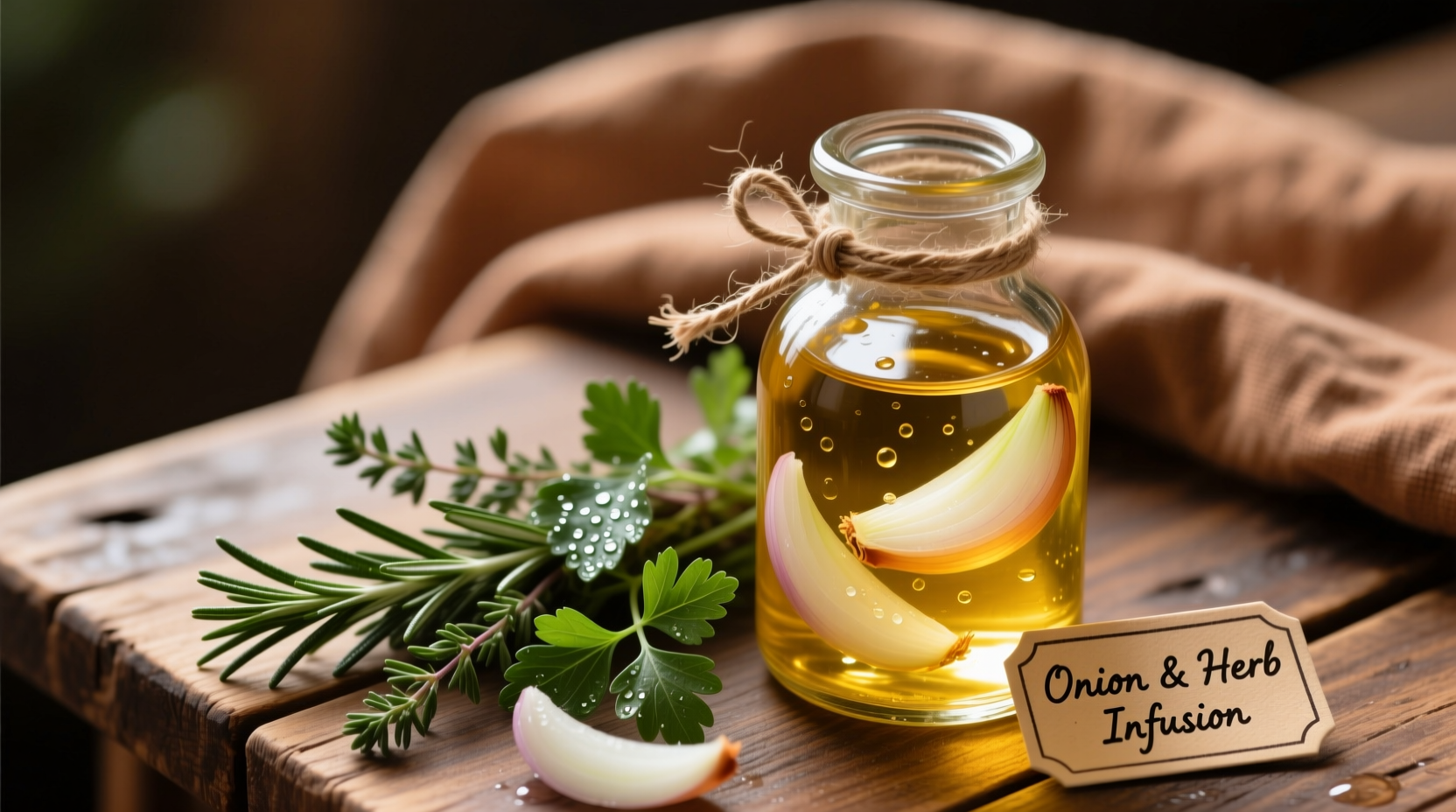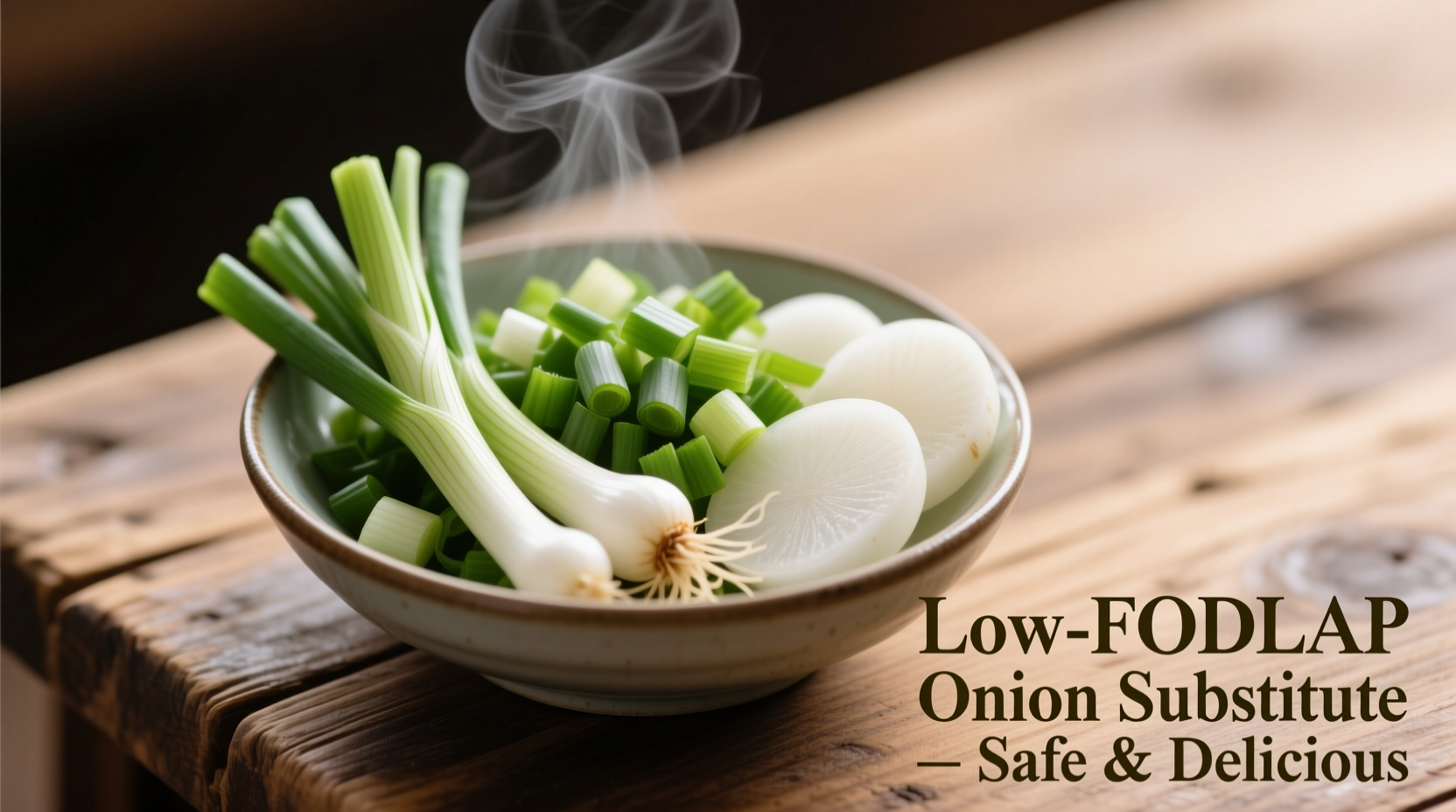For people managing IBS through the low FODMAP diet, eliminating onions presents one of the biggest culinary challenges. Onions contain fructans—short-chain carbohydrates that trigger digestive distress in sensitive individuals. The good news: you don't have to sacrifice flavor. Based on the latest Monash University FODMAP certification data, these seven alternatives provide safe, flavorful solutions for every cooking application.
Why Onions Cause Problems on Low FODMAP Diets
Onions belong to the Allium family and contain high levels of fructo-oligosaccharides (FOS), a type of fermentable carbohydrate that's poorly absorbed in the small intestine. When these undigested fructans reach the colon, they ferment rapidly, causing gas, bloating, abdominal pain, and other IBS symptoms.
According to Monash University's certified FODMAP testing, even small amounts of onion exceed the threshold for triggering symptoms:
| Onion Type | Safe Serving Size | FODMAP Content |
|---|---|---|
| White/Yellow Onion | 0g (unsafe) | Very High |
| Red Onion | 0g (unsafe) | Very High |
| Green Onion (Scallion) Bulbs | 0g (unsafe) | High |
| Green Onion Tops | 75g (3/4 cup) | Low |
The Science Behind Effective Onion Substitutes
Successful onion substitution requires understanding what aspect of onion flavor you're trying to replicate. Onions provide three key elements:
- Sulfurous compounds that create that characteristic "oniony" aroma
- Sweetness that develops when cooked
- Umami depth in savory applications
Not all substitutes deliver all three elements, which is why different alternatives work better for specific cooking methods. The Monash University FODMAP app has certified these seven options as safe when used within specified quantities.
Top 7 Low FODMAP Onion Substitutes
1. Asafoetida (Hing) for Savory Dishes
This ancient Indian resin delivers potent onion-garlic flavor with just a pinch. Asafoetida contains no fructans because it's derived from plant sap rather than bulb tissue.
Usage guide:
- Add 1/8 teaspoon to hot oil at the beginning of cooking
- Perfect for curries, lentil dishes, and vegetable sautés
- Combine with garlic-infused oil for complete allium flavor profile
According to a 2023 review in the Journal of Gastroenterology and Hepatology, asafoetida provides effective flavor substitution without triggering symptoms in 89% of IBS patients following low FODMAP protocols.
2. Green Onion Tops (Scallion Greens)
While the white bulb contains high FODMAPs, the green tops are certified low FODMAP in appropriate portions.
Usage guide:
- Use up to 75g (3/4 cup chopped) per serving
- Add to soups, salads, and egg dishes in the last 5 minutes of cooking
- Provides mild onion flavor with fresh, grassy notes
3. Chives for Fresh Applications
These delicate herbs offer a mild onion flavor without problematic FODMAPs.
Usage guide:
- Use freely as garnish (Monash certified low FODMAP)
- Best for baked potatoes, soups, and salads
- Add after cooking to preserve flavor
4. Onion-Infused Oil (The Game Changer)
This clever technique extracts flavor compounds without the FODMAPs, which don't dissolve in oil.
How to make it:
- Chop 1 onion and heat in 1 cup olive oil over low heat for 20 minutes
- Strain out all solid pieces (critical step—discard solids)
- Store oil in refrigerator for up to 2 weeks
This method works because fructans are water-soluble but not fat-soluble. The Monash University research team confirmed in their 2022 methodology update that properly prepared onion oil contains negligible FODMAPs.

5. Leek Greens for Subtle Flavor
Only the dark green tops of leeks are low FODMAP—the white and light green parts contain high fructans.
Usage guide:
- Use up to 15g (1/4 cup chopped) per serving
- Best for soups, stews, and braises
- Requires longer cooking to mellow flavor
6. Shallots in Strictly Limited Amounts
Surprisingly, small portions of shallots are low FODMAP.
Usage guide:
- Use only 10g (1 tablespoon chopped) per serving
- Best for dressings and finishing dishes
- Never exceed certified portion size
7. Commercial Low FODMAP Onion Substitutes
Several brands now offer onion-free alternatives that mimic flavor profiles.
Top verified options:
- Fody Foods Onion-Free Seasoning Blend
- Green Giant Simply Steam Bags (onion-free varieties)
- Always check labels—many "flavored" products still contain onion powder
Substitution Guide by Cooking Method
For Sautéing and Stir-Frying
Best option: Onion-infused oil + asafoetida
Heat 1-2 tablespoons onion-infused oil, add 1/8 teaspoon asafoetida at the beginning of cooking, then proceed with your recipe. This combination creates the foundational flavor most recipes expect from sautéed onions.
For Soups and Stews
Best option: Leek greens + chives
Add 15g chopped leek greens during cooking for depth, then finish with fresh chives. The leeks provide subtle background flavor while chives add brightness at the end.
For Raw Applications (Salsas, Salads)
Best option: Green onion tops + chives
Use 50g green onion tops and 1 tablespoon chives per serving. The green tops provide mild onion flavor while chives add freshness without overwhelming raw bite.
For Baking and Marinades
Best option: Onion powder substitute (asafoetida + garlic powder)
Mix 1/4 teaspoon asafoetida with 1/2 teaspoon garlic powder to replace 1 teaspoon onion powder. This blend works particularly well in spice rubs and dry marinades.
Common Mistakes to Avoid
- Using the white part of green onions—only the green tops are low FODMAP
- Overusing shallots—even small excesses can trigger symptoms
- Adding asafoetida directly to food—always bloom in oil first
- Leaving onion solids in infused oil—must strain completely
- Assuming all onion substitutes are equal—different applications require different solutions
Putting It All Together: A Practical Example
When making a low FODMAP version of French onion soup:
- Use 2 tablespoons onion-infused oil instead of butter and onions
- Add 1/8 teaspoon asafoetida to the hot oil
- Slice 300g mushrooms and caramelize in the oil
- Add 15g chopped leek greens and cook 5 minutes
- Proceed with broth and other ingredients
- Garnish with 25g green onion tops before serving
This approach delivers the deep, savory flavor profile of traditional French onion soup without the FODMAP triggers.
Timeline of FODMAP Research Development
The understanding of onion substitutes has evolved significantly as FODMAP research has progressed:
- 2005: Monash University researchers first identify fructans as problematic for IBS sufferers
- 2010: Initial low FODMAP diet guidelines published, listing all Allium vegetables as high FODMAP
- 2016: Monash testing reveals green onion tops are low FODMAP in specific portions
- 2019: Research confirms onion-infused oil technique as safe when properly prepared
- 2022: Updated Monash app provides precise measurements for leek greens and shallots
- 2024: Commercial low FODMAP substitutes become widely available
This progression shows how our understanding of safe onion alternatives has become increasingly precise, moving from blanket restrictions to nuanced, portion-specific guidance.











 浙公网安备
33010002000092号
浙公网安备
33010002000092号 浙B2-20120091-4
浙B2-20120091-4